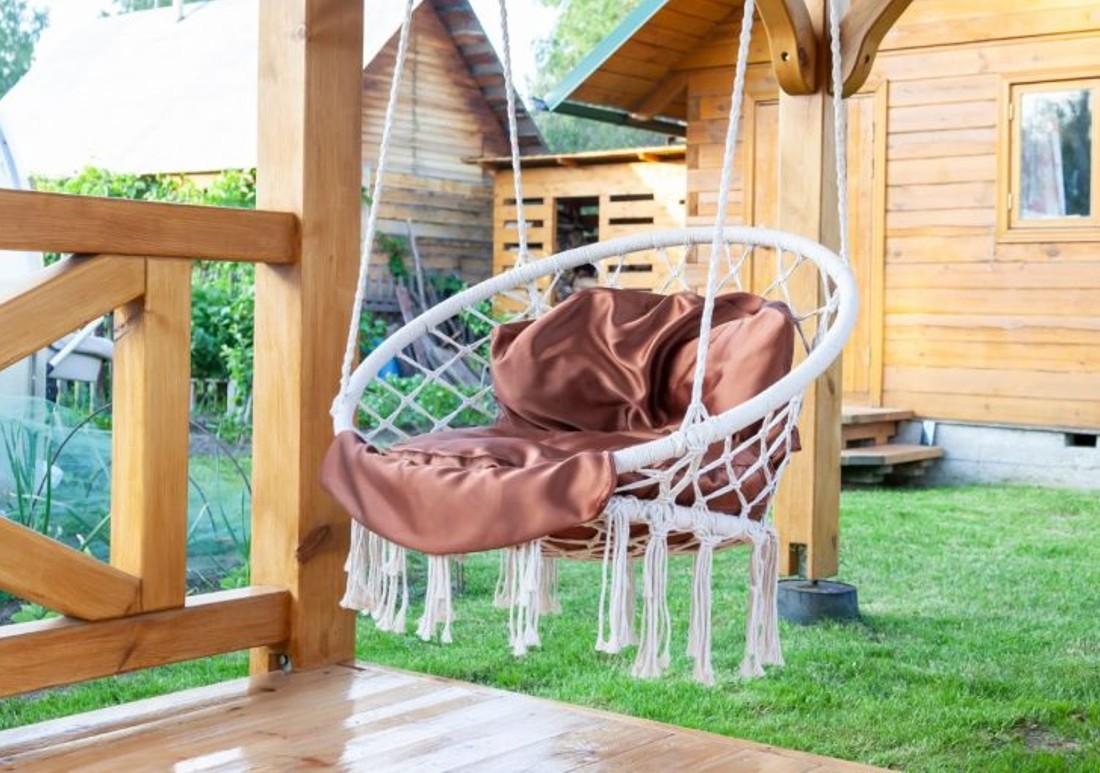5 Tips for Securely Hanging a Porch Swing

Nothing is more relaxing than sitting on a porch swing, feeling the wind on your face and watching the sunset. But before you can start putting your feet up for a well-deserved rest, you must ensure your swing is securely attached to your porch. If you don’t, it could come crashing down unexpectedly, and that’s a safety hazard you don’t want to take lightly.
In this post, we’ll look at the best ways to securely hang a porch swing and share five tips for achieving a safe and stable setup. From choosing the right hardware to considering the weight of the swing, there’s a lot to consider when installing a swing. Follow our steps, and you’ll be able to enjoy your porch swing without worrying about it coming down.
Understand What Type of Porch Swing You Have
Before beginning the installation process, evaluating the type of porch swing you are installing is important. Many porch swings hang with two support chains at each end of the frame about halfway between its ends and center. Others suspend from a single attachment group that spans across its center. Depending on your porch swing type, the installation process will differ slightly.
Select Appropriate Attachment Points
Once you have identified the type of porch swing you have, the next step is to choose where you would like to hang it. If hanging from two support chains, select two appropriate points on your porch’s ceiling or roof, such as at each end of a beam or other structural member, with enough distance from each other and the frame of the porch swing itself to avoid any contact when swinging. If hanging from a single support chain, ensure enough space between either end of the swing and the wall of your home or any other nearby structures and space for adequate clearance when swinging.
Use the Right Hardware
The hardware you use is important in ensuring your porch swing is secure. The most common hardware used to hang porch swings are eye bolts and S-hooks; however, depending on the weight capacity of your specific model, heavy-duty hardware like carabiners or screw-link chains may also be necessary. Eye bolts should be long enough to penetrate both the ceiling material and any insulation present while still allowing enough space for an S-hook to fit underneath; if using carabiners or screw-link chains, they should feature a rating higher than that of the weight capacity of your porch swing. Additionally, you should treat all hardware with a rust-resistant coating before installation and inspect for signs of wear and tear regularly after installation is complete for added protection against corrosion or accidental detachment over time.
Choose the Correct Installation Method
How you attach your eye bolts or other hardware will vary depending on both their size and your choice of ceiling material; in general, though, eye bolts should be inserted into wood ceilings with lag screws and metal ceilings with machine screws, while you should bolt down carabiners and screw-link chains should with larger screws specifically designed for such purposes. Additionally, small pieces of 2×4 wood can be used as spacers between the ceiling surface and screw heads if needed for larger screws used with carabiners or screw-link chains to provide added protection against damage due to their more powerful retaining force.
Test the Swing Before Use
Once all hardware has been securely attached to both your ceiling surface and your porch swing using S-hooks or other metal connecting devices safely secured by wire connectors, it is important to thoroughly test it before allowing others to use it, such as children or pets. One can do this easily by gently rocking the empty porch swing using minimal force initially before gradually increasing this force until it reaches its full range of motion without any jarring movement or noticeable creaking sounds from either the structure’s frame or its metal connecting parts, such as S-hooks or carabiners. Suppose you notice any signs of instability during this testing process. In that case, immediately check all connections for signs of loosening or damage before being adjusted if necessary and tested again until adequately secure and ready for use without compromising safety standards.
Installing a securely held porch swing can seem intimidating at first but becomes much easier if these five tips are followed correctly during installation: understanding what type of porch swing you have; selecting appropriate attachment points; using the right hardware; choosing the correct installation method, and testing before use will all help ensure that your new porch swing hangs safely and securely from now until many swings on your porch swing in years to come!